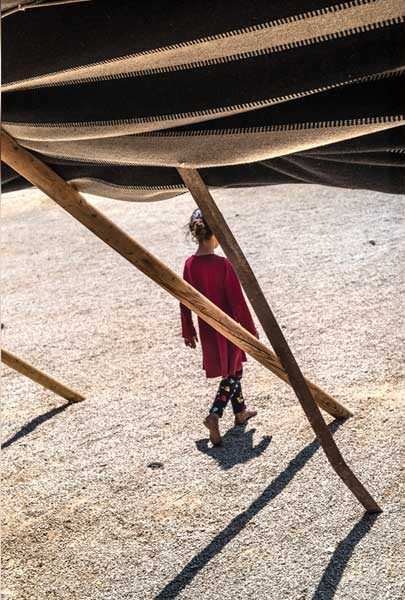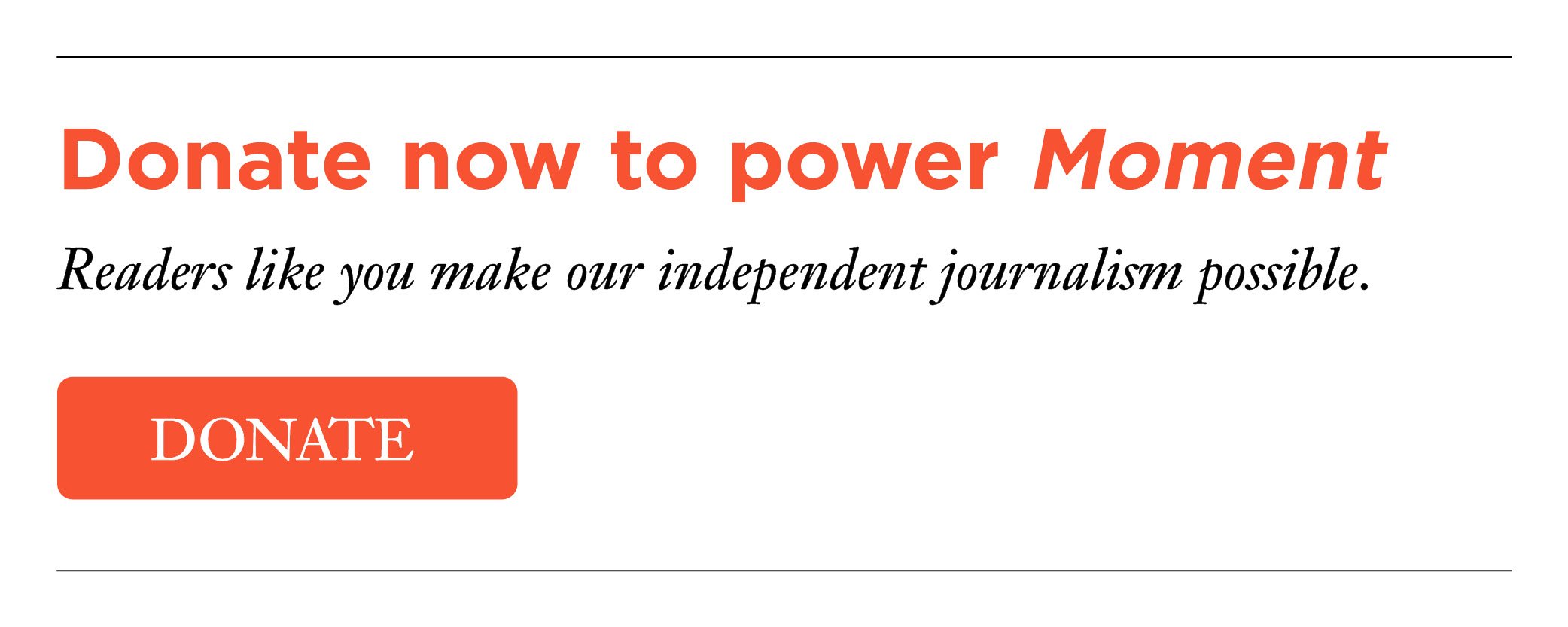It all began when two friends were chatting over a drink in the lobby of a Paris hotel. It was the fall of 2018, and American photographer Ralph Gibson and investment manager Martin Cohen, who share an interest in music and photography, were in the city to attend an international photo fair. Cohen, who is a longtime member of the Board of Governors of the Hebrew Union College-Jewish Institute of Religion and has made numerous trips to Israel, asked Gibson if he had ever been there. Gibson had not but said he would love to visit. Knowing Ralph’s work, says Cohen, “it came to me that a view of Israel through his unique lens would capture the people and land in a fresh, moving, artistic and informative manner. So I said, ‘Let me take you there. I think there might be something for you to photograph.’”
Cohen put together an itinerary, shaping three one-week trips during 2019, guiding their journey throughout the country from biblical antiquity to contemporary life. “I wanted Ralph to capture the beauty, complexity and diversity of the Land of Israel—its people, places, history and culture,” says Cohen. And so began a project that took the two friends from the isolation of the Negev desert to the bustling streets of Tel Aviv (“Miami with integrity,” as Gibson put it), from the warm shores of the Mediterranean to the snow-capped mountains of the north. It was a project that resulted in the publication of an arresting book and the mounting of a special exhibition.
“The light is clarion, optical and of a Mediterranean hue,” writes Gibson in his preface to the book of images he assembled from those three trips to Israel. Titled Sacred Land, the volume was the inspiration for a recent exhibition at the Heller Museum of Hebrew Union College (HUC) in Manhattan. That exhibit moved to the Skirball Museum at HUC in Cincinnati at the end of October and will be on view there through February 23, 2025. The show will then go on to the Rollins Museum of Art in Winter Park, FL, and the Sherwin Miller Museum of Jewish Art in Tulsa, OK.
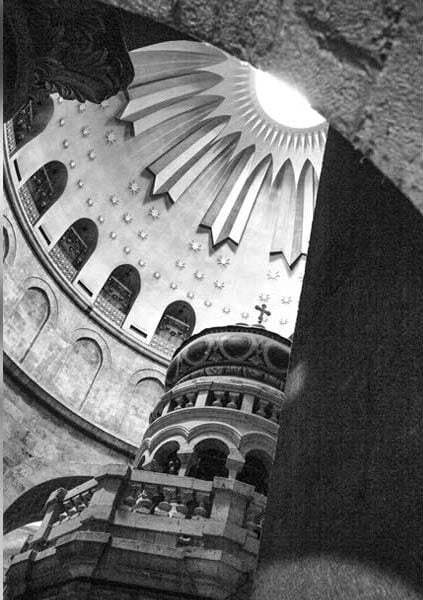
Church of the Holy Sepulchre, Jerusalem. (Photo credit: Courtesy Heller Museum, Hebrew Union College-Jewish Institute of Religion, New York)
“Ralph Gibson’s photographs seek to capture the essence of ancient forms and textures,” writes Israeli-Canadian architect Moshe Safdie on the cover of the book. “The qualities that have descended with the generations…those timeless qualities we associate with the Holy Land.”
A noted photographer with images in numerous museums, Gibson is known for his work in black and white and his focus on simple elements and details—the curve of an ancient vase, the arc of a bridge. “I seldom photograph at the kind of scale of the images in Sacred Land,” he says, “I usually photograph close up and more urban. This project entailed a change of perspective for me.”
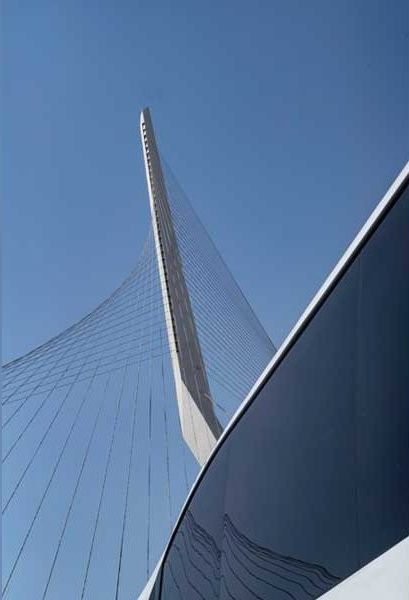
Calatrava Bridge, Petah Tikva. (Photo credit: Courtesy Heller Museum, Hebrew Union College-Jewish Institute of Religion, New York)
“During one of our trips, I took a picture of a camel,” says Cohen. “Ralph, however, took a picture of the camel’s nose. He would focus in on an angle, on a corner, on a particular aspect of the scene and make it very, very interesting. His ability to focus on single elements of an image is what distinguishes his work and is something he’s very good at.”
When Gibson was 17, the Navy sent him to photography school. He later attended the San Francisco Art Institute, where he began using a Leica rangefinder camera. He’s used it exclusively ever since. “It’s capable of doing anything I’m capable of asking it,” he says. He frames his photos as he’s taking them. He doesn’t crop. “Even if I did,” he jokes, “I don’t.” In New York City he worked briefly as a photojournalist before turning his attention to projects of his own.
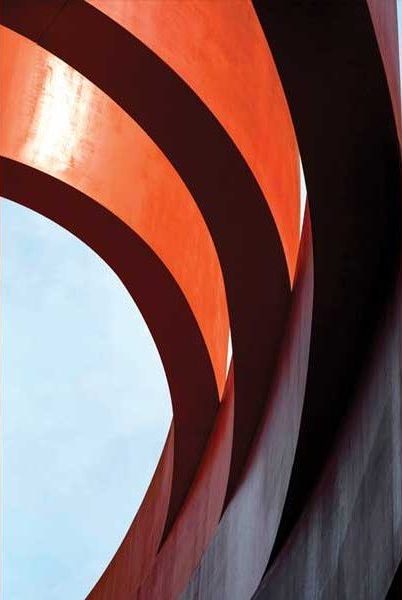
Design Museum, Holon. (Photo credit: Courtesy Heller Museum, Hebrew Union College-Jewish Institute of Religion, New York)
“I’m not so interested in the photograph itself,” Gibson says. “When I listen to music or look at art, what I’m really interested in is the effect it produces on me. I’m very abstract and somewhat esoteric, I’m told.”
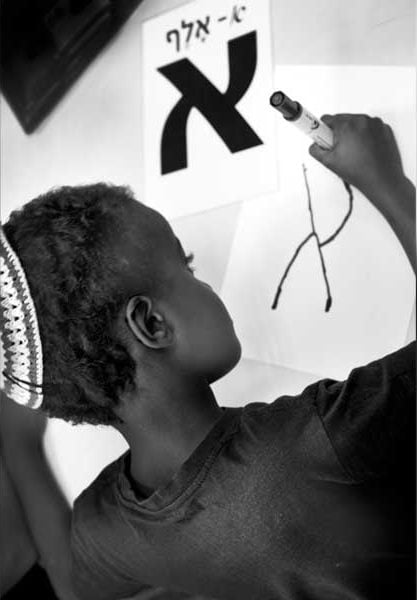
Ethiopian student, Rehovot school. (Photo credit: Courtesy Heller Museum, Hebrew Union College-Jewish Institute of Religion, New York)
Gibson was raised Catholic but had a grandfather who married into a Jewish family. His father worked in Hollywood at Warner Bros. as assistant director to Alfred Hitchcock and had many Jewish friends. Gibson was a child extra at the studio and was greatly influenced by the filmmaking process. He abandoned Catholicism at about age 15 and has been agnostic ever since. But, he says, it only took him two afternoons walking down the streets of Jerusalem to find himself immersed in the spirituality of the place. “To be in the cradle of civilization and religion,” he explains, “it’s ineluctable. It was pure spirituality—the spirituality of the air I was breathing and the antiquity.”
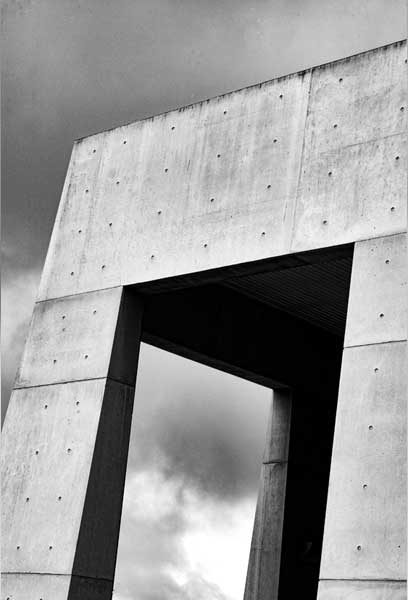
Yad Vashem, Jerusalem. (Photo credit: Courtesy Heller Museum, Hebrew Union College-Jewish Institute of Religion, New York)
Gibson did all the photography in Sacred Land over a period of 19 days, and began laying out the book after the first trip. Much like a musical composition, a book sets its tone, he says. “There was a very careful calculation in the way it was put together.”
The images are both transitory and timeless, intimate and universal. Their juxtapositions in the book, as in the exhibition, document the convergence of antiquity and modernity, secularity and spirituality. The photographs feature millennia-old archaeological artifacts and structures, contemporary city views and diverse landscapes, religions and individuals. From Herod’s chamber at Masada to a solar thermal power station in the Negev, from the Western Wall in Jerusalem to a baptism in the Jordan River, the photographs offer a first-hand, singular perspective. Paging through the volume, one can see Gibson’s eye seeking out details, creating new compositions, new geometries and rhythms.
“In this relatively small nation,” says Cohen, “one can witness and relive the very beginnings of world history and experience the world’s most advanced institutions of science, technology and medicine. Personally, I find visiting religious sites, such as the great churches, mosques and temples, reinforces for me the immense power of faith evident everywhere. I never knew about the Jordan River baptism site. It was tremendously moving—hundreds of people chanting, singing, praying—the power of faith on full display.”
En route to Masada via helicopter, Gibson was particularly struck by the view of Jerusalem from the air and beguiled by the beauty of the desert. He had decided ahead of time that he would not impose his view or preconceptions on subjects. “I wanted Israel to show me what it wanted me to photograph,” he says.
“Sacred Land’s photographs draw us closer to people, places and things, the instantaneous and the eternal,” says Jean Bloch Rosensaft, director of the Heller Museum. “Gibson’s images reveal the fundamental humanity and underlying affinities that connect all who deem this land as sacred. They offer an olive branch and express our aspirations for healing, mutual understanding, empathy and peace.”
Sacred Land: Israel Before and After Time, photographs by Ralph Gibson, produced by Martin Cohen, Lustrum.

